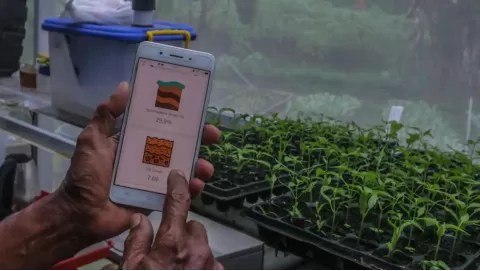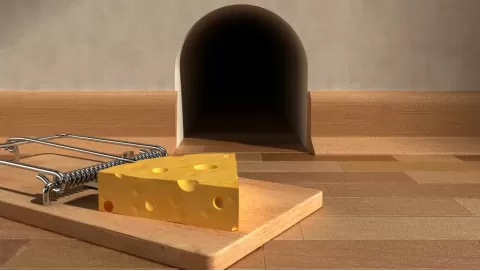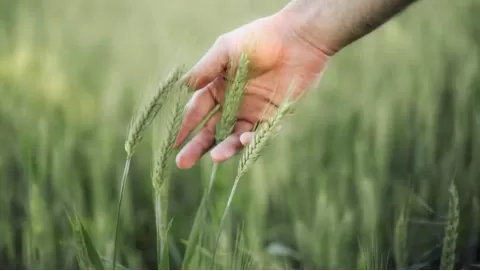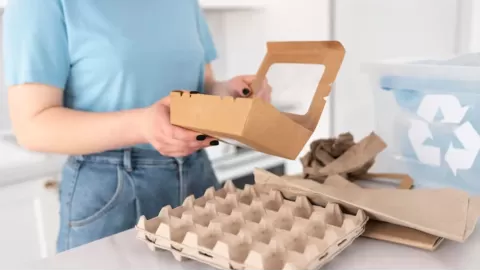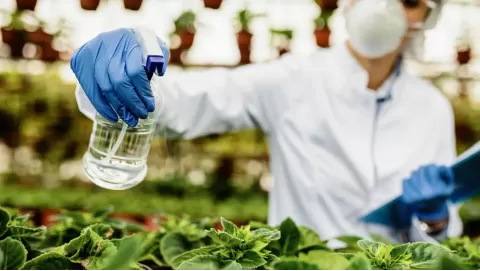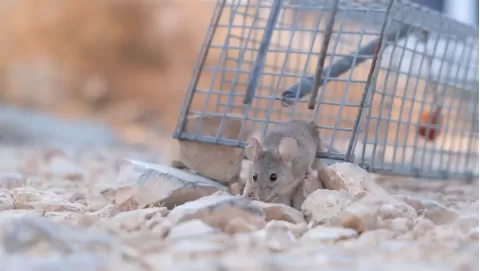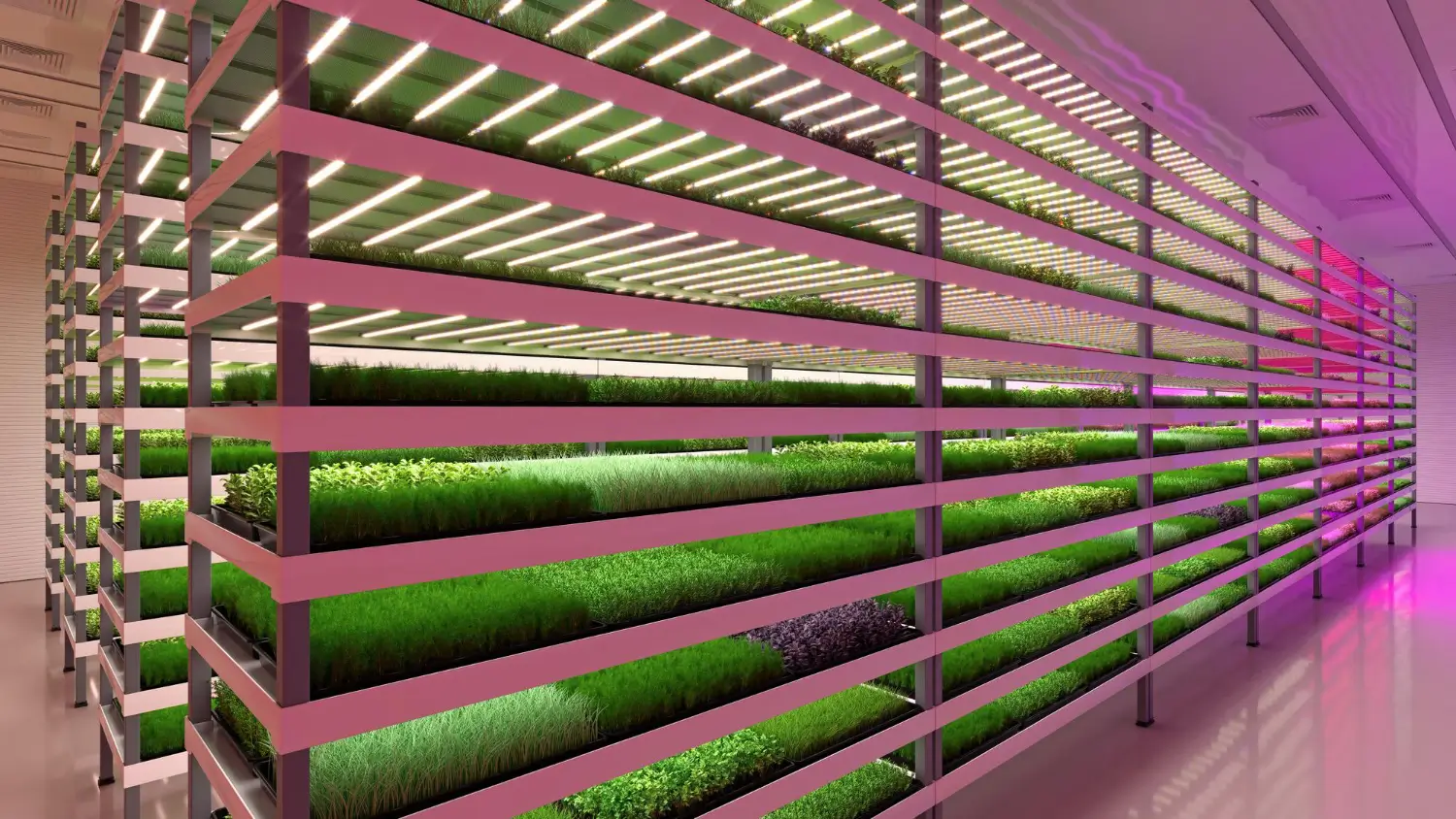
Vertical Farming: Innovative Ideas for Small Spaces
- What: Vertical farming is a method of growing crops in stacked layers, often indoors.
- Ideal For: Urban areas, small spaces, and year-round gardening.
- Benefits: Efficient use of space, reduced water usage, and consistent crop yields.
- Key Components: Vertical racks, hydroponic or aeroponic systems, and LED lighting.
- Popular Crops: Leafy greens, herbs, strawberries, and microgreens.
- Tip: Use automation tools for watering and lighting to maximize efficiency.
Food security is becoming a greater concern as the world's population grows. Traditional farming methods often lead to deforestation, climate change, and soil damage. Nowadays, there isn’t much space available in cities and suburbs, making it hard to grow fresh food locally. This leads to higher food prices and long supply chains.
In vertical farming, farmers can use the minimum area for the maximum food production. Using vertical spaces to store food in shipping containers, buildings, or greenhouses can save a lot of space, ultimately increasing fresh food productivity and reducing food waste.
In a controlled environment, vertical farming is less affected by weather, which means less crop damage. Therefore, vertical farming is a solution that will help manage the food issue for future generations. Growcycle provides guides and ideas on vertical farming to improve crop yields year-round.

What is Vertical Farming?
Vertical farming grows food in stacked layers, often in buildings, greenhouses, or other controlled environments. This approach uses vertical spaces, like walls or shelves, to grow crops, allowing farmers to produce more food in a smaller area.
Vertical farming often relies on technologies like hydroponics (growing plants without soil), aeroponics (growing plants with their roots suspended in air), and artificial lighting to optimize plant growth.
Importance of Vertical Farming in Small Spaces
- The vertical farming method is essential to solving the issues of urbanization, land resources, and food security.
- It is an ideal farming trick in areas where traditional farming is not applicable.
- Homeowners or individuals can grow fresh products in their apartments or small homes.
- Individuals can grow all the seasoned foods in vertical farming.
- The growth of plants cannot be affected by harsh weather in this controlled farming method.
- It reduces the dependency on external food supplies, which means less transportation fees.
- Soil degradation stops in the vertical farming method.
- Healthy and fresh food is produced in small spaces without any harmful chemicals or pesticides.
- The carbon footprint automatically reduces and promotes sustainable practices.
Vertical Farming vs Traditional Farming
Vertical farming and traditional farming are two different methods of growing crops, each with its own advantages and challenges:
Features | Vertical Farming | Traditional Farming |
Space Utilization | Uses vertical stacking, maximizing production in small areas. | Requires large horizontal land areas for cultivation. |
Water Usage | It saves up to 90% water and has less water usage. | High water consumption with wastage potential. |
Crop Yield | Higher yield per square foot due to controlled conditions. | Yield depends on soil quality, climate, and seasons. |
Land Dependency | It is not reliant on fertile land and can be set up anywhere. | Requires fertile land and natural conditions. |
Weather Resistance | Does not get impacted by harsh weather. A controlled environment allows year-round farming. | Vulnerable to weather and seasonal changes. |
Energy Efficiency | High energy usage for artificial lighting, climate control, and automation. | Relies on natural sunlight; less energy-intensive. |
Sustainability | More sustainable with reduced land and water use. | This can lead to deforestation, soil erosion, and water waste |
Environmental Factor | Reduces carbon footprint with local food production. | Significant environmental impact due to transportation and land use. |
Scalability | Easy to scale in urban or limited spaces. | Difficult to expand in areas with limited land. |
Benefits of Vertical Farming
Vertical farming is an innovative agricultural method that uses stacked layers or vertical structures to grow crops. Here are some key advantages of vertical farming:
- Efficient Use of Space: Vertical farming makes the most of limited space by growing crops upwards, not outwards. This allows people to farm in cities or places with little land. It’s especially useful in urban areas, where there is a lot of unused building space.
- Water Conservation: Vertical farms use much less water than traditional farms. In systems like hydroponics or aeroponics, only a small amount of water is needed, and the rest is recycled back into the system. This means there’s no waste, and water is used more efficiently, which is important in areas facing water shortages.
- Reduced Transportation Costs: Since vertical farms can be set up closer to where people live, food doesn’t need to travel long distances. This reduces the costs and environmental impact of transporting food, which can help lower the carbon footprint.
- Higher Crop Yields: Because the growing conditions in vertical farms are controlled, crops can grow faster and in higher quantities. Farmers can harvest more crops in a smaller space, which helps meet the demand for food.
- Less Need for Pesticides: Vertical farming often requires fewer pesticides than traditional farming because the controlled environment helps protect crops from pests. This can result in cleaner food and less harm to the environment.
- Energy Efficiency: Vertical farms often use energy-efficient technology, like LED lights, to help plants grow. These lights use less energy than traditional lighting, making vertical farms more energy-efficient and environmentally friendly.
- Sustainability: Since vertical farming doesn’t require large land areas, it helps reduce deforestation and land degradation. It also reduces the environmental impact of farming by using fewer resources like water and energy. This makes vertical farming a more sustainable option for producing food in the future.
- Improved Biodiversity: Vertical farming doesn’t disturb natural habitats as much as traditional farming. Because there’s no need to clear large areas of land, animals, and plants in the surrounding environment can thrive, helping to support biodiversity in the area.
Types of Vertical Farming
There are several different types of vertical farming, each using unique methods to grow crops in stacked layers or vertical structures. These methods allow farmers to produce food in limited space, making vertical farming more efficient. Here are the main types:
1. Hydroponics
Hydroponics is a method where plants are grown in water, not soil. The plants receive nutrients directly through the water, which is often enriched with minerals. In vertical hydroponic farming, crops are grown in stacked trays or towers, and the water is recycled throughout the system. This method uses less water than traditional farming and can be set up indoors or in urban spaces.
2. Aeroponics
Aeroponics is similar to hydroponics, but it uses air instead of water to grow plants. The roots of the plants are suspended in the air and sprayed with a fine mist of water and nutrients. This method is highly efficient in water usage, and the lack of soil prevents many pests and diseases, making it a cleaner option for growing food. It is often used in high-tech vertical farming systems.
3. Aquaponics
Aquaponics combines hydroponics with aquaculture (fish farming). This system raises fish in tanks, and their waste provides plant nutrients. The plants, in turn, help clean the water, which is then recirculated back to the fish tanks. This creates a sustainable ecosystem where both plants and animals benefit from each other. Aquaponic systems can be vertical, allowing farmers to grow both crops and fish in the same space.
4. Soil-Based Vertical Farming
While most vertical farms use soil-less growing methods, some vertical farms still use traditional soil to grow crops. In this system, plants are grown in stacked trays or soil-filled containers. Soil-based vertical farming is less common than hydroponics and aeroponics but can be used in areas where soil quality is good or when growing certain types of crops that require soil.
5. Vertical Farms with LED Lighting
This type of vertical farming uses artificial light to simulate sunlight for plant growth. LED grow lights are often used because they are energy-efficient and can be adjusted to provide the optimal light spectrum for different types of crops. These vertical farms can be set up indoors, such as in warehouses or unused buildings, and are perfect for growing crops in cities or places with little natural sunlight.
Innovative Ideas for Small-Scale Vertical Farming
Small-scale vertical farming can be a great way for individuals or small communities to grow fresh food efficiently, even in limited spaces. Here are some creative and practical ideas for setting up small-scale vertical farms:
1. Rack Farming
Racks are metal shelves with LED grow lights added to hold trays or plant pots. Individuals can use this idea to grow microgreens, lettuce, leafy greens, and herbs in their small spaces. This is a soilless hydroponic farming system. Hence, plants have the nutrient-rich water solution submerged in their roots, eliminating the need for soil.
The racks can be customized to any size. They are specifically beneficial for spaces such as basements, warehouses, and garages. The controlled LED lights environment and automated system are significant in year-round crop production.
Timers, pumps, and sensors are specially designed for rack farming to monitor and regulate the temperature inside the space. Stacks and compact structures allow high-yield crop production on a smaller level. Farmers can customize this rack space and care for the plants instead of stressing about the large farming space.
2. Container Farming
It is a modern agriculture method to maximize crop yield per square foot. It is a portable and modular form of farming specifically designed for areas such as the backyard, parking lot, and rooftop. In the containers, weather conditions do not impact the crop yield. 
Farmers can utilize shipping containers to increase crop productivity. This system includes sensors, climate control, and LED lighting to regulate the inside humidity level. Leafy crops such as herbs, microgreens, and mushrooms are significant in container farming.
It is a space-efficient method that uses vertical racking to save space. Farmers can choose any size or model according to their financial budget.
3. DIY Farming
DIY farming is a method that uses recycled or wasted products to yield food. It mostly uses low-cost products such as Plastic bottles, PVC pipes, and wooden buckets.
Soilless methods such as aeroponic or hydroponic technology are involved in this improvised farming. Often, crops need soil-based methods to increase the growth and quality of plants. In urban settings, this method is significant for conserving little resources.
It is a creative way to increase plant growth while adding aesthetic appeal. It allows farmers to use sustainable farming processes within a limited space. It mostly utilizes balconies, windowsills, or closets.
4. Tower Farming
It is a method designed to grow crops in cylindrical or tower-shaped structures. Strawberries, herbs, tomatoes, and peppers are the most significant food products in this farming process.
Soilless technology, such as aeroponics, is often used. Indoor or outdoor spaces can be utilized, such as balconies, greenhouses, or patios. It increases plant growth per square foot and maximizes crop yield.
Farmers can save up to 95% of water through this tower farming. They can use the central pole to hold the plants vertically. Energy-efficient processes, such as solar-powered options, are beneficial for sustainable growth.
Limitations of Vertical Farming
Small-scale vertical farming can be a great way for individuals or small communities to grow fresh food efficiently, even in limited spaces. Here are some creative and practical ideas for setting up small-scale vertical farms:
1. Reliance on Technology
Vertical farming is highly dependent on technology. Proper use of technical aspects is essential; otherwise, the crop cannot be yielded at the required level. Farmers may need labor training to understand technical knowledge and its complexities.
Technology has its own risks and drawbacks, which can reduce the speed of plant growth inside the farming house. The sensors and regulatory control of humidity level and temperature need to work at the optimal level, which is a risk in itself. The whole crop can be wasted with the wrong technical use.
2. High Energy Consumptions
In the vertical farming process, artificial light and humidity levels lead to higher energy consumption. LED grow lights, temperature sensors, and humidity control are significant factors.
The areas with limited natural light require higher light and sensor technology for plants to grow healthy. Artificial lights are being utilized in the photosynthesis process of plants, which means higher energy usage.
3. Higher Startup Cost
In setting up a vertical farming garden, farmers may need to invest heavily in the technologies and tools of the farming process. They need to invest more in infrastructure and technology.
The automated control system, sensors, and climate control can be challenging financial issues for small-scale farmers. Hence, they can face issues at the beginning of the startup process.
4. Cannot Utilize Tall Field Crops
Vertical farming cannot proceed with tall-field crops and diversified plants. These crops need wider space and natural resources to grow, which is not possible in vertical farming.
Farmers cannot grow crops like wheat, soybeans, and grains, which raises concerns over the sustainability of vertical farming. Hence, large-scale farming does not suit the vertical farming method well.
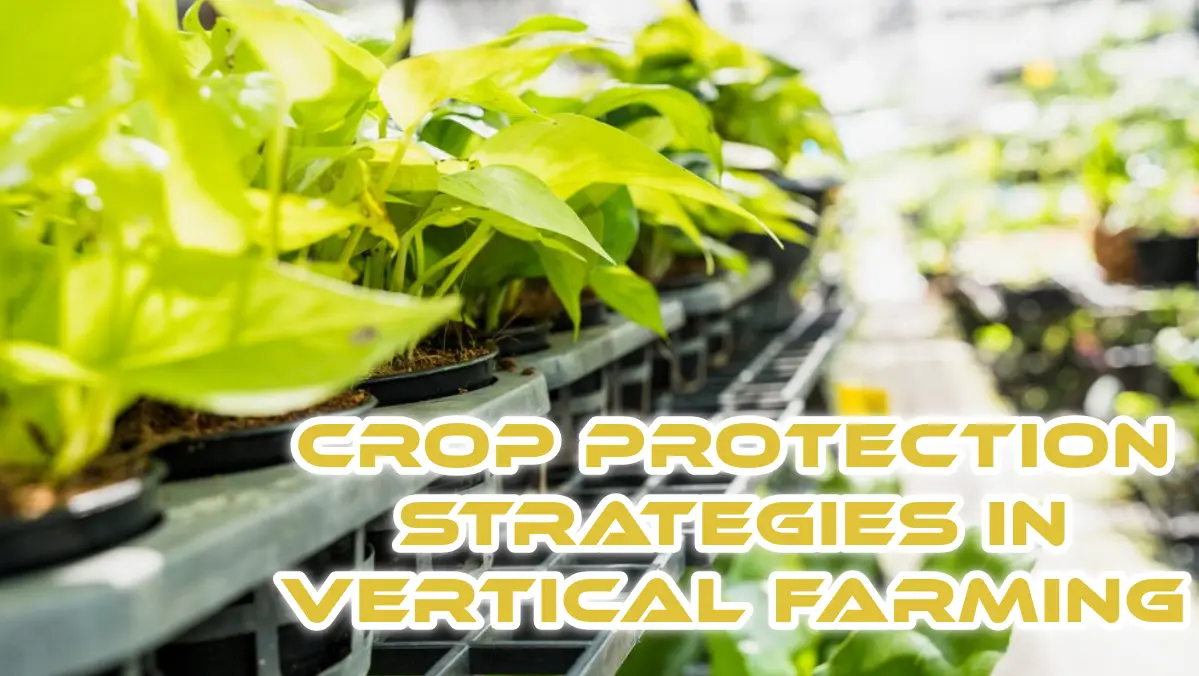
Advanced Crop Protection Strategies in Vertical Farming
Vertical farming is a new way to grow plants. It's done in warehouses, freight trains, or shipping containers in towns. By growing plants in layers in a controlled environment, vertical farming makes good use of space
LEARN MORE →The Future of Vertical Farming in Small Spaces
The future of vertical farming in small spaces looks promising as it continues to grow in popularity and innovation. Here are some key points to consider:
- As technology improves, vertical farming systems will become cheaper, making it easier for more people to grow food in small spaces.
- Vertical farms will use sensors and automation to control water, light, and temperature, making it easier for people to grow plants successfully.
- More types of crops will be able to grow in vertical farms, expanding the options for indoor growing.
- Cities will see more vertical farming on rooftops, balconies, and unused spaces. This will help provide fresh food in urban areas.
- Vertical farming uses less water and space, making it a more eco-friendly way to grow food. It will become a popular choice for sustainable living.
- Small vertical farms could be shared by neighbors or in apartment buildings. This will help people grow their own food even in crowded spaces.
- Vertical farming systems will be part of smart homes, allowing people to control their farms with their phones. This will make farming at home more convenient.
- Vertical farms will provide people with fresher and healthier food and make nutritious options more available in cities.
- More people will use recycled materials to set up vertical farms. This will make farming affordable and eco-friendly.
FAQs
What crops are best for vertical farming?
Small-scale crops such as leafy greens, herbs, and microgreens are the best choices for vertical farming. However, other crops, such as tomatoes, cucumbers, and mushrooms, also do well in vertical farming.
How does vertical farming work?
Vertical farming uses water-based systems such as hydroponics or aeroponics to grow plants in small spaces. It mostly does not utilize soil and grows plants in stacked and compact layers.
Can I implement vertical farming at home?
Yes, vertical farming is a home-based (DIY) farming process. Vertical gardens and the hydroponic DIY method are highly significant.
The Bottom Line
Vertical farming is a modern way to grow plants in small spaces. By stacking plants on top of each other, it helps produce more crops in less space. The nutrient-rich solutions used in these systems reduce the need for water, making it perfect for small areas.
Ideas like rack farming, tower farming, and greenwall gardens are creative ways to use space in homes or offices. With the growcycle, farmers can explore different vertical farming methods and get expert advice.
- Wiki - Vertical farming
- Agricultural Research Service (ARS) is the U.S. Department of Agriculture's - Vertical Farming – No Longer A Futuristic Concept
Disclaimer: This material is for informational purposes only and should not be relied on for legal, medical, financial, or any other form of professional advice.




